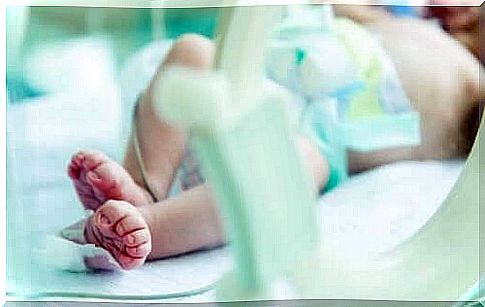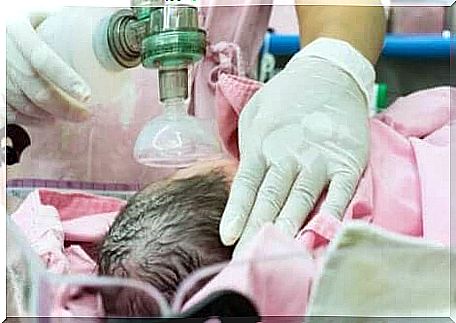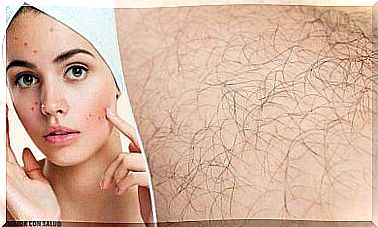Respiratory Diseases In Newborns

Babies are particularly susceptible to certain diseases. Their early detection enables effective diagnosis and treatment, for example to bring respiratory diseases under control. In this article, we present the most common respiratory diseases in newborns.
According to the Respiratory Disorders in the Newborn study, respiratory problems are quite common in newborn babies, which may seem surprising. They require prompt treatment because they can be life threatening.
Respiratory diseases in newborns

Respiratory diseases in newborns can be due to infectious factors or birth defects. To go through the most common respiratory diseases in newborns, we focus on research led by Dr. Cesar Alberto Orozco.
Interstitial lung disease
This first respiratory disease can affect all or part of the lung. It causes irreversible damage to the septum of the alveoli, causing the air to dissipate. This occurs spontaneously, usually in newborns receiving respiratory therapy. Sometimes it occurs in babies who weigh significantly less than recommended.
The most commonly used form of treatment is placing the newborn baby on the side of the diseased lung to collapse it and promote healing. Doctors can also place an endotracheal tube in a healthy lung so that the other lung can heal.
Pneumothorax
This second respiratory disease is usually more common in premature babies. In it, air gets stuck in the peribronchial space, causing the lung to collapse. That stuck air usually escapes to the area between the lung and the chest, known as the pleura. In this case, the skin of the newborn usually looks bluish; this is known as cyanosis.
This disease is considered an emergency because the risk of neonatal death is quite high. The solution is usually to insert a catheter into the baby’s chest into the pleura to remove escaped air.
Transient tachypnea in the newborn

This third neonatal respiratory disease lasts less than 24 hours. In this case, too, the baby’s skin may begin to turn blue, due to the fluid still in the lungs. Although much of the fluid is usually lost when the baby is breathing, sometimes caesarean section or premature babies may have difficulty getting the fluid out quickly.
The usual treatment is constant monitoring and giving extra oxygen to the baby. The typical symptom of the disease is accelerated breathing. During treatment, the baby should receive fluids and nutrients intravenously.
Other respiratory diseases in neonates
We have now discussed three quite different respiratory diseases in newborns. Because there can be many other problems of this type, we will now briefly talk about a few other newborn diseases.
- Congenital tracheomalacia. In this case, the trachea does not develop properly but remains weak and limp. The baby’s breathing keeps sound. Usually the ailment improves within 18 months.
- Congenital bronchiectasis. In this disease, the airways dilate as a result of infection or inhalation of a foreign object. The disease usually leads to complications, and the goal of treatment is to treat infections (which are usually recurrent). In most cases, the damage is irreversible.
- Pulmonary hypoplasia. Causes abnormal development of the lungs, preventing branching of the airways and arteries. This, of course, causes shortness of breath, which often results in the death of the baby. However, it is a relatively rare disease.
- Congenital pneumonia. In this case, the lung tissue becomes inflamed, resulting in a fairly high mortality rate. However, timely antibiotic treatment can help prevent death.
Here were a few respiratory diseases in newborns. Early diagnosis is key to enabling physicians to treat them in a timely manner. The nursing staff will do the necessary tests to assess what is the best treatment for the baby.









